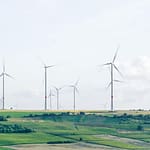Cities are at the forefront of the fight against climate change, offering both the greatest challenge and the best chance to keep global warming far below 2°C. Currently, more than half of the world’s population lives in cities and uses 78% of the primary energy produced. producing more than 70% of the world’s carbon emissions. Over two-thirds of the world’s population is projected to reside in cities by 2050. To minimize emissions and create resilient and egalitarian urban ecosystems, changes must be made right away.
The goal of net zero city is to establish an environment that promotes clean electricity and circularity, which will lead to urban decarbonization and resilience. By encouraging public-private cooperation to close the gap between the energy, built environment, and transportation sectors, the initiative hopes to achieve this goal.
The goal is to establish a supportive environment for clean electrification and circularity, which will lead to urban resilience and decarbonization. By encouraging public-private collaboration to close the gap between the energy, built environment, and transportation sectors, the program hopes to achieve this goal.
Example of Net Zero City
The goal of creating the first net zero city, which would produce more food and energy than it consumes, is for everyone to work together. These cities would be planned to provide the security of food, energy, and water while simultaneously fostering ecotourism and a green economy.
Egypt’s Cairo is coming up as a net zero city. The 580-acre sustainable city is expected to house 35,000 people in 9,000 residential units across all economic levels. The initiative will generate 10,000 jobs, the bulk of which will be in green technology fields like food, energy, water, and waste management, resulting in the development of a circular green economy in the city.
Some of the attraction of this net zero city would be:
- Food, energy, and water security are all provided by a smart, self-sufficient metropolis.
- A city that is climate positive produces more food and renewable energy than it consumes.
- Atmospheric water generators fueled by solar energy create pure drinking water from the atmosphere.
- 100% walkable city with 11.5 km of designated equestrian, cycling, and running trails.
- Ecotourism is promoted by eco resorts, nature preserves, and recreational facilities.
- Medical hub with clinics for medical tourism and amenities including an autism village.
- Modern educational institutions, such as nurseries, schools, and institutes.
Here’s How You Achieve Net Zero City?
Several nations have vowed to take the lead on climate action and cut their emissions by 55% by 2030 with the goal of achieving climate neutrality by 2050 in response to the current climate emergency and goals outlined by the Paris Agreement.
Cities’ participation in the climate transition is more crucial than ever as they continue to expand and take on greater economic, intellectual, and technological significance. Cities have a key role to play in a situation where fast and rapid decarbonization is required. This role includes ensuring that our decarbonization efforts are equitable and improve community well-being, in addition to achieving the climate goals and targets outlined by international policy frameworks.
To do this, countries are joining forces with Net Zero Cities to assist cities in overcoming the present structural, institutional, and cultural obstacles they face to achieve climate neutrality by 2030. This will be accomplished by:
- Creation of a platform focused on services and supported by experts.
- Co-creation of the solutions required to meet net-zero objectives in a way that is socially inclusive.
- Building capabilities in systemic transformation, democratic governance, public participation, capital and financial structuring, and social innovation.
- Creation and promotion of new and current tools, resources, and knowledge into a platform that serves as a one-stop shop and is available to all cities via an internet site.
- To accelerate learning on how to attain climate neutrality at the municipal scale, support is provided to up to 30 pilot cities.




![SABRENT Releases 4-Drive NVMe M.2 SSD to PCIe 3.0 x4 Adapter Card [PC-P3X4]](https://mlwwgw1yj61b.i.optimole.com/w:440/h:264/q:mauto/rt:fill/g:ce/f:best/https://www.enostech.com/wp-content/uploads/2023/01/unnamed-1-2.jpg)







